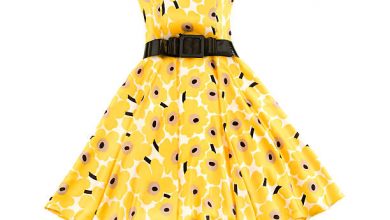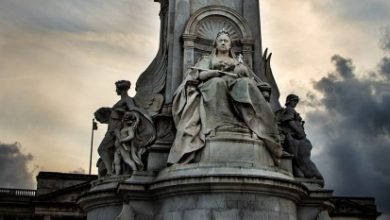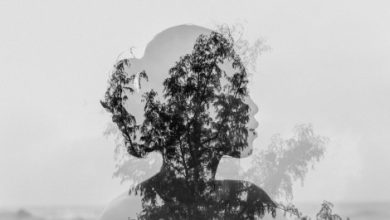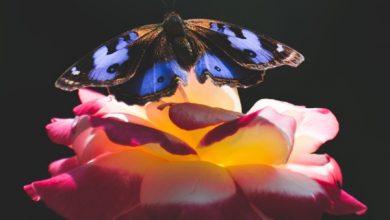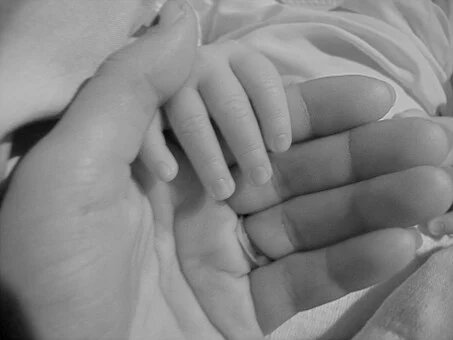
Genetics by Sinead Morrissey is a six stanza poem made of sets of three lines or tercets. The poem follows this same pattern except for the last stanza which consists of four lines known as a quatrain. The tercets use repletion like ‘hands’ and ‘palms’ which give us a reference to the history the poet alludes to. This poem speaks on the composition of one’s body and it also shows how every person is made up of their mother and father and therefore, holds them with themselves at any given time.
Genetics by Sinead Morrissey | Summary and Analysis
The poem is told in the first person by a narrator, whose parents have separated and are no longer living together. The poem mainly focuses on the theme of what happens to the children in such circumstances when her parents get divorced and what goes on in the mind of the child. The poem begins with the narrator looking at her hands and seeing the representation of her mother and father who have made her. Throughout the poem, the port addresses that she sees her father in her fingers and her mother in her palms and the point where her fingers meet her palms, she imagines that as the place where they would be forever united in a bond.
These parts of her hands keep her family with one another even after the separation of her parents. The poem concludes with the narrator hoping to have a family and a child of her own along with her significant other. She is hopeful about what the future would bring for her.
Genetics | Analysis, 1 to 3 (Stanza 1)
My father’s in my fingers, but my mother’s in my palms.
I lift them up and look at them with pleasure –
I know my parents made me by my hands.
The speaker begins the poem in a first-person narrative and uses pronouns like ‘I’ and ‘me’ while referring to her. It is highly likely that the poem is told from the author’s perspective. The poet begins the poem by describing her hands. She looks down at her hands and sees a vision of her mother and father in them. She sees her mother in her palms and her father in her fingers. The speaker is perhaps projecting her connection to her family member and seeing the similarity in both of their autonomies. She can make out the similarity between her and her parents and this fact fills her with pleasure as she stands gazing at her hands. She understands that her parents made her and brought her to life ‘by her hands’. It is possible the speaker is referring to the similarity with her parents again and imagines that these were the hands that created her.
Genetics | Analysis, Lines 4 to 6 (Stanza 2)
They may have been repelled to separate lands,
to separate hemispheres, may sleep with other lovers,
but in me they touch where fingers link to palms.
In the second stanza, the speaker informs the reader that her parents have been separated from each other. A little bit of family history is given here as these lines make it clear that she doesn’t live with her parents nor do her parents live with each other. There is an undertone of nostalgia in these lines as the speaker reminisces the time when they were together. Despite this, the speaker has made her peace with the fact that her parents are separated and living away in different countries and even different hemispheres. Both of her parents have new people in their life to love and cherish. Even though they are not together, the speaker says that the point where her fingers link to her palms is the point where her parents touch each other. The speaker is referring to the fact that both of them created her together and she would always be an amalgamation of them and their essence would live together in her body no matter how far they lie from each other.
Genetics | Analysis, Lines 7 to 9 (Stanza 3)
With nothing left of their togetherness but friends
who quarry for their image by a river,
at least I know their marriage by my hands.
The third stanza is a continuation of the second one and it continues to describe the relationship between the father and mother of the speaker. The speaker makes note of the fact that their relationship, which was once everything and which brought her to this earth, is reduced to nothing. As it happens, her parents still consider each other as ‘friends’ but the speaker knows the truth that their ‘friendship’ is like gazing at a river where there are numerous ripples on the surface and nothing seems solid or concrete. The use of ‘quarry’ here may seem unusual but this word can be a version of ‘quarrel’ which can be a representation of the impact of the relationship that was crumbling before thy separated and the effect it had on the speaker. The speaker remembers them quarrelling over their own image which shows that perhaps these people are searching for something that was once present. The speaker makes the reader aware that she is not bitter about the fact that their relationship and marriage crumbled in fact, she is aware that she is holding the proof of their marriage in her hands and inside her own body.
Genetics | Analysis, Lines 10 to 12 (Stanza 4)
I shape a chapel where a steeple stands.
And when I turn it over,
my father’s by my fingers, my mother’s by my palms
The most important theme in the poem ‘Genetics’ is the relation of ideas of church and marriage, and the first line of the stanza shows the narrator making the shape of a chapel where a steeple stands with their hands. Here, the narrator tries to re-enact the marriage ceremony of her parents with her hands. This line further leads us to believe that perhaps the narrator is not as accepting of the separation of her parents as the reader may have thought once. She is eager to reconcile her parents in any way that she can. This behaviour of the speaker may be considered a bit childlike but it invokes sympathy in a reader for the narrator as this line depicts that no matter the age, the separation of a parent has a powerful impact on the child’s mind. She tries to commit the image to her memory and sees it from all directions. When she turns her hands over, she is once again reminded that she holds them both in her hands and her body, no matter if they are together or not.
Genetics | Analysis, Lines 13 to 15 (Stanza 5)
demure before a priest reciting psalms.
My body is their marriage register.
I re-enact their wedding with my hands.
Since it is highly unlikely that the narrator was present at her parent’s wedding, she tries to imagine what it must have been like when they got married. She turns the image over and over in her head and tries to re-enact the day when they said their wedding vows. She thinks that her mother must have been very demure and shy while standing on the altar while the priest is reciting their wedding vows. She imagines how different it must have been to today when they both are in different places with different people. There was a time when her parents wanted to be with each other, now it feels like there is no proof or record of their marriage and its existence. She looks at her body and decides that it is the sole proof one can give that their marriage existed. It is their ‘marriage register’. She laments over their separation once again and re-enacts their wedding with her hands. This proves that she is in anguish and desperate to have them together in any way that she can even if it’s only in her imagination.
Genetics | Analysis, Lines 16 to 19 (Stanza 6)
So take me with you, take up the skins demands
for mirroring in bodies for the future.
I’ll bequeath my fingers, if you bequeath your palms.
We know our parents make us by our hands.
In the last stanza, the speaker seems to be talking to her significant other. She requests that her partner takes her with him to the place he is going. She wants to stay with her partner and continue to live life with him. She wants to be a part of ‘mirroring in bodies for the future’; as in, she wants to live her own life and have children of her own who will have the body that will be a combination of both of them and they will be able to find parts of themselves in their children. She knows what happened with her parents and how they got separated from each other. Despite this, the speaker is hopeful that they would not be like this and that they would have a wonderful life with her significant other and the children they may have in the future. This depicts the bravery that the narrator has as she is not scared that she would end up in the same situation as her parents, rather she is anticipating her future and the wonders it holds. The narrator further asks her partner to pass his palms onto the upcoming children they would have and in return, the narrator says that she would pass them onto her fingers. She knows that the parents create their children with their essence and pass them a piece of themselves and the narrator is looking forward to doing the same with her children and continuing the process.
Genetics | About the Author- Sinead Morrissey
Sinead Morrissey was born in Portadown, County Armagh in Northern Ireland on the 24th of April 1972. She is a Northern Irish poet. She was raised in Belfast but she got her education at Tiffany College, Dublin, where she got her BA and PhD degrees. After living in Japan and New Zealand for some time, she now lives in Newcastle. In January 2014, she was awarded the T. S. Eliot Prize for her fifth collection ‘Parallax’ and later in 2017 she won the Forward Prize for Poetry for her sixth collection ‘On Balance’.

